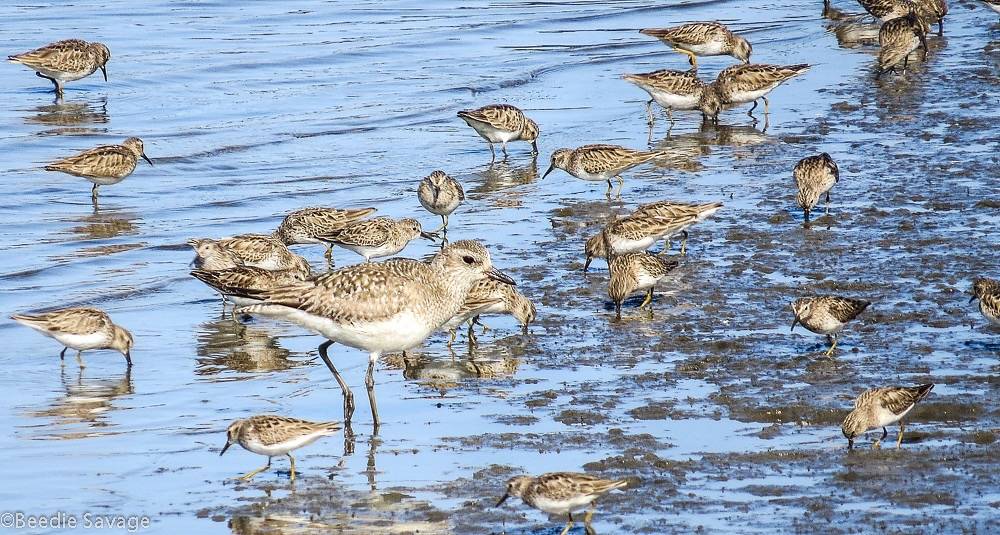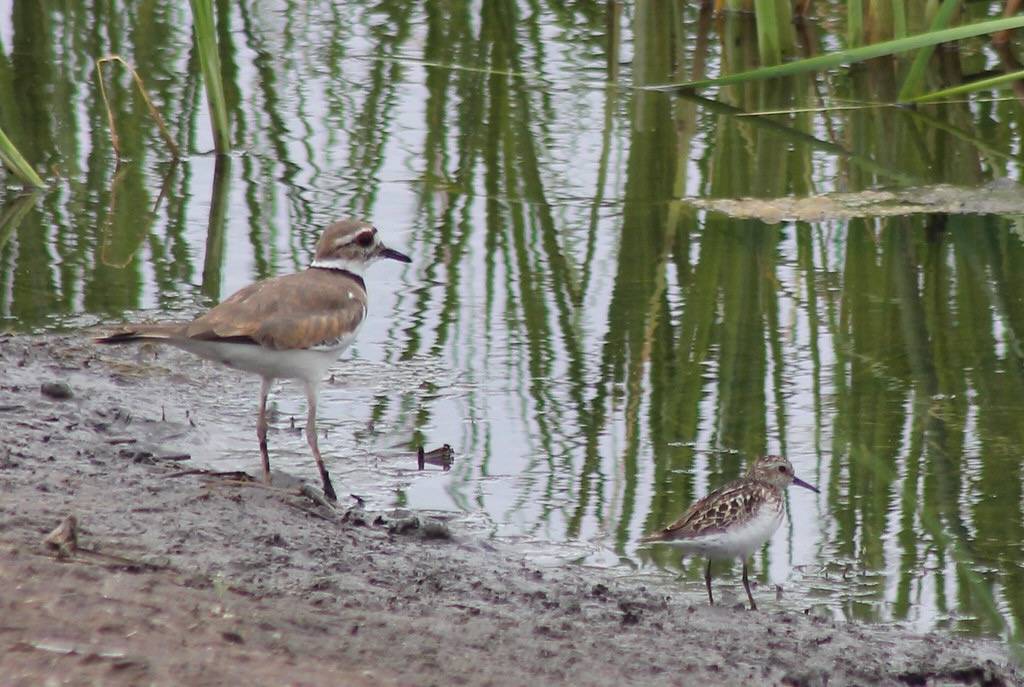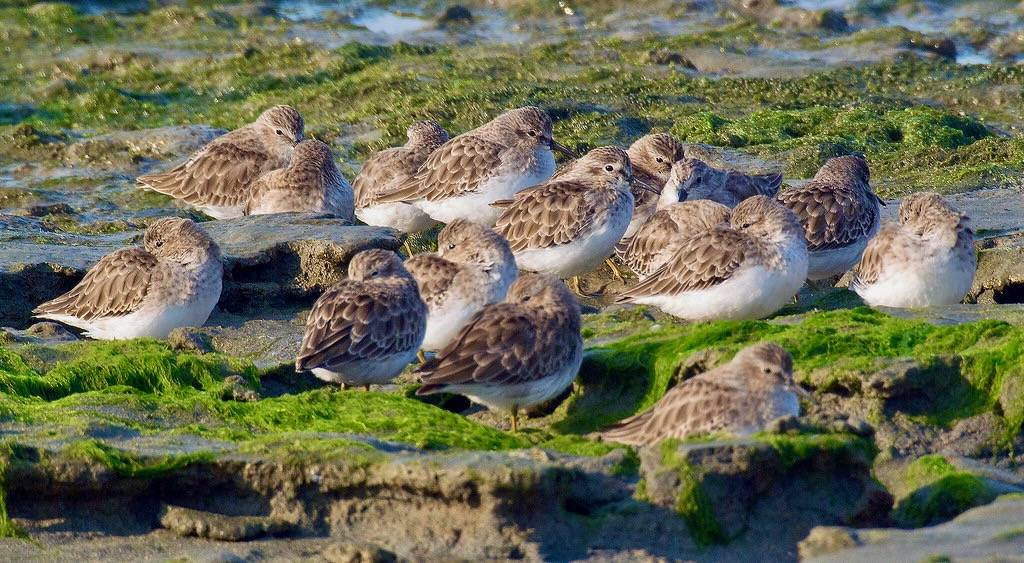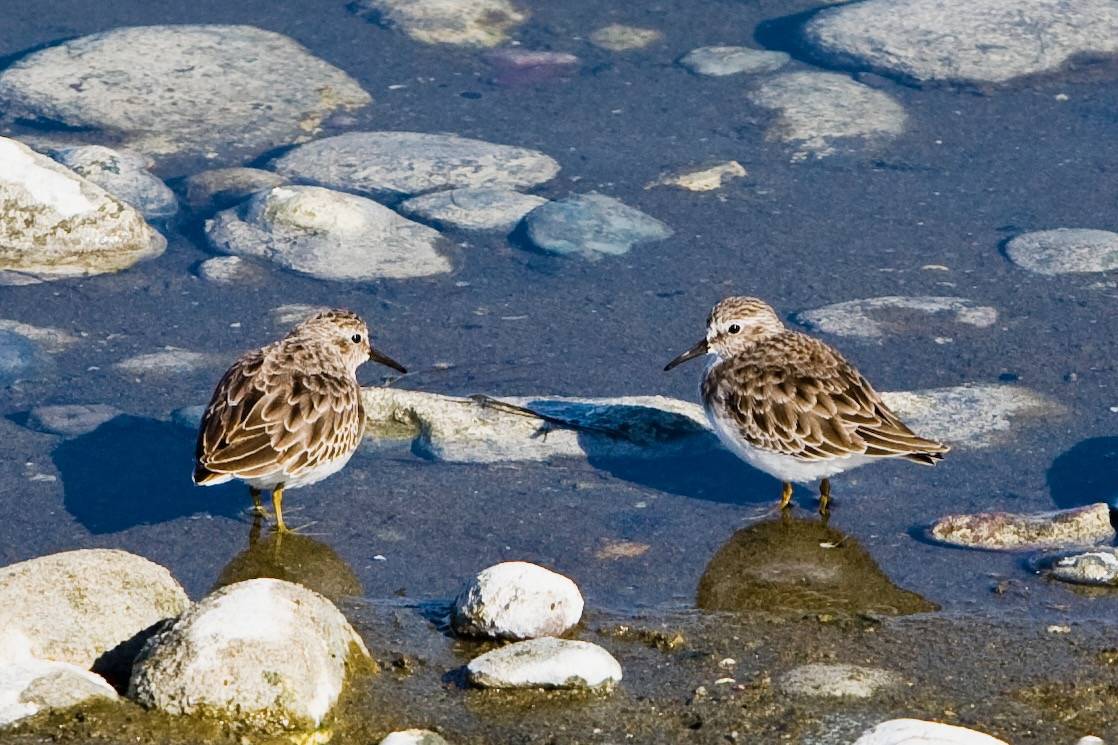Least Sandpiper
From mid-May through early September, the boat launch at Salter Grove is a likely place to see migrating Least Sandpipers. Just steps from parked cars, it's possible to see several, a few, or solitary birds, probing intently for invertebrates on the mudflat exposed at low tide.
No larger than a sparrow, the Least Sandpiper is the smallest shorebird in the world! It has yellow legs which distinguishes it from the slightly larger Semipalmated Sandpiper which has black legs. Other distinguishing features include the subtle curve of the Least Sandpiper's slim black bill and its characteristic hunched posture while feeding. Its plumage is also more contrasty than that of the Semipalmated Sandpiper.
Compared to the other small shorebirds, the Least Sandpiper is most likely to occur around inland bodies of water during migration. It favors the muddy shorelines of marshes, ponds, and rivers rather than open sandy beaches or large coastal mudflats. Unlike the Semipalmated Sandpiper it does not congregate in large monospecific flocks numbering in the thousands but rather occurs in small groups, often with other species.
It breeds in tundra wetlands and bogs of northern North America and migrates southward to winter in the southern United States. Some populations migrate directly from northeastern Canada to winter in South America--traveling non-stop for a distance of 2,500 miles over the ocean!
Its small size belies its durability and longevity. Not only can it travel long distances twice a year, a female was recaptured 15 years after it was banded. However, surveys in recent decades indicate that populations in eastern North America are on the decline.
The Least Sandpiper requires innumerable invertebrate prey to sustain its breeding activities as well as to fuel its twice-yearly migration over thousands of miles. Its remote breeding grounds are not prone to disturbance but some of the wintering grounds and habitats used in migration have become food deserts because human activities have reduced the productivity of prey species.

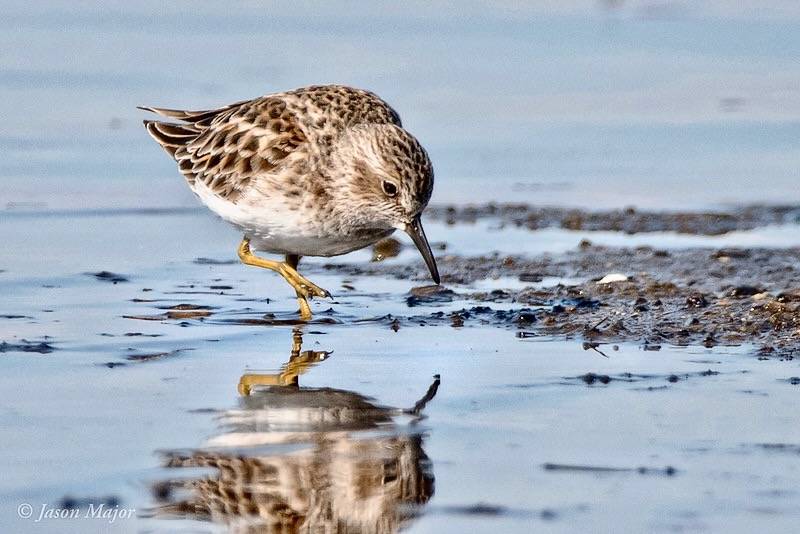
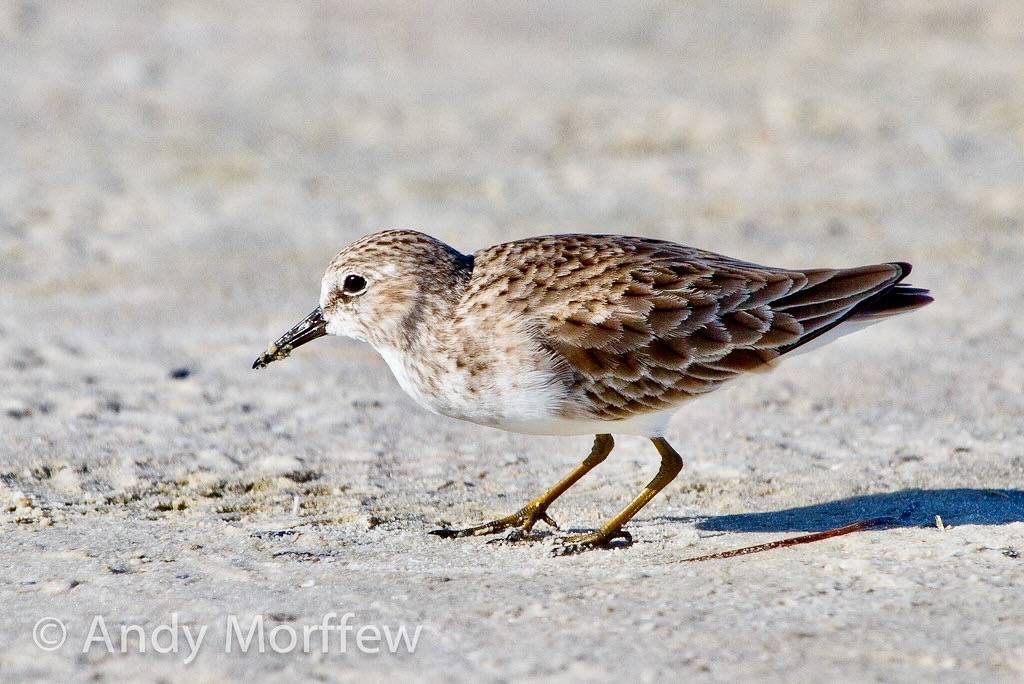
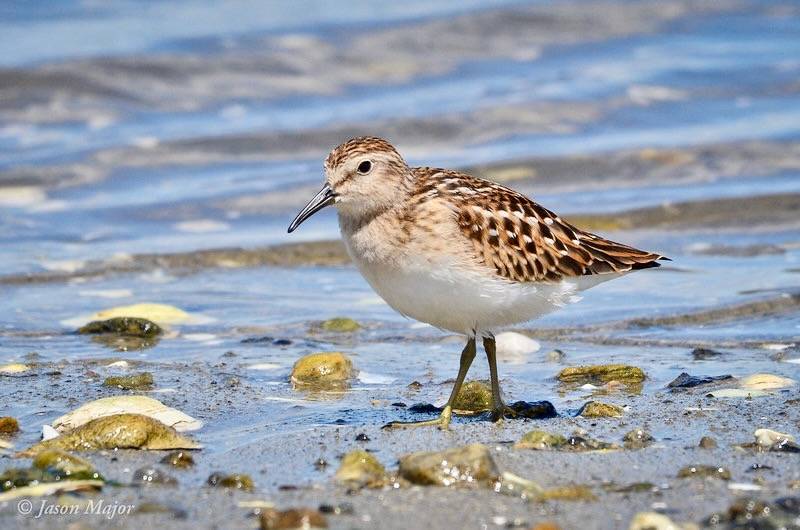
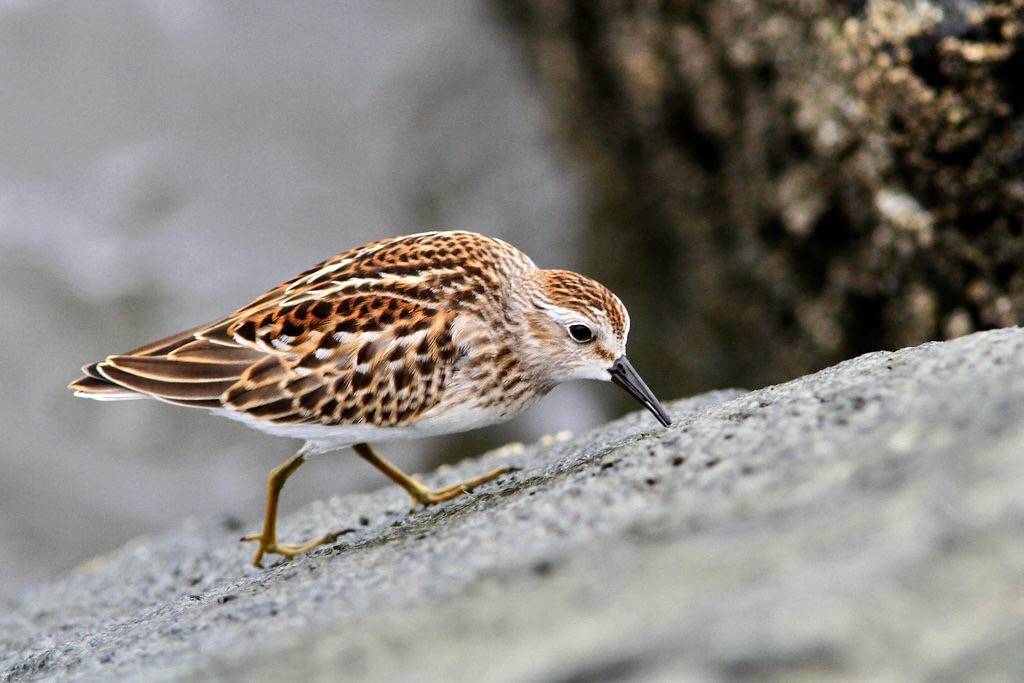
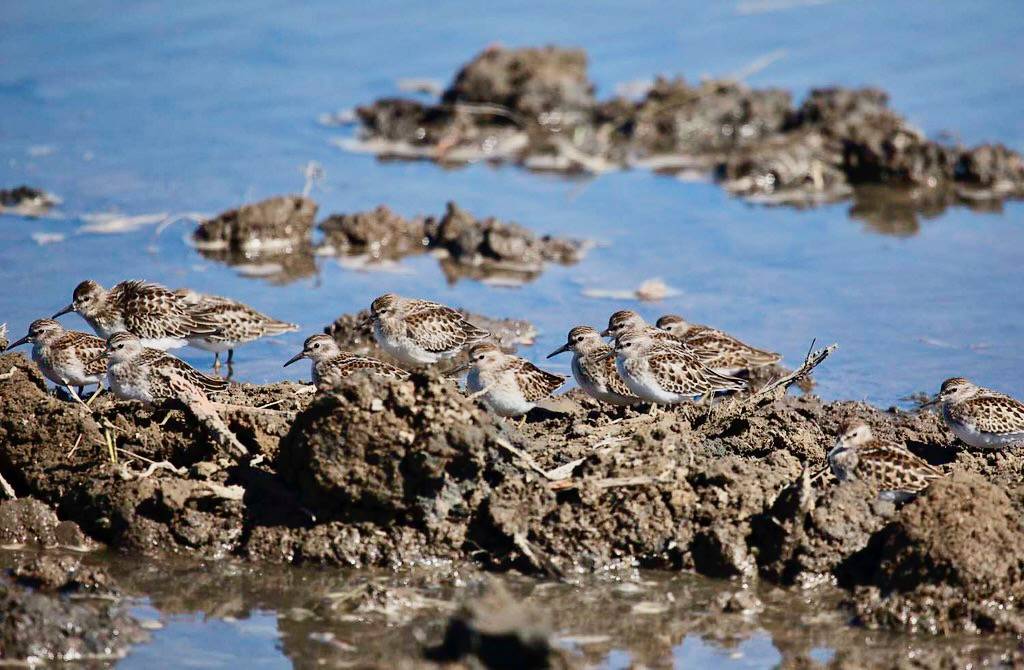
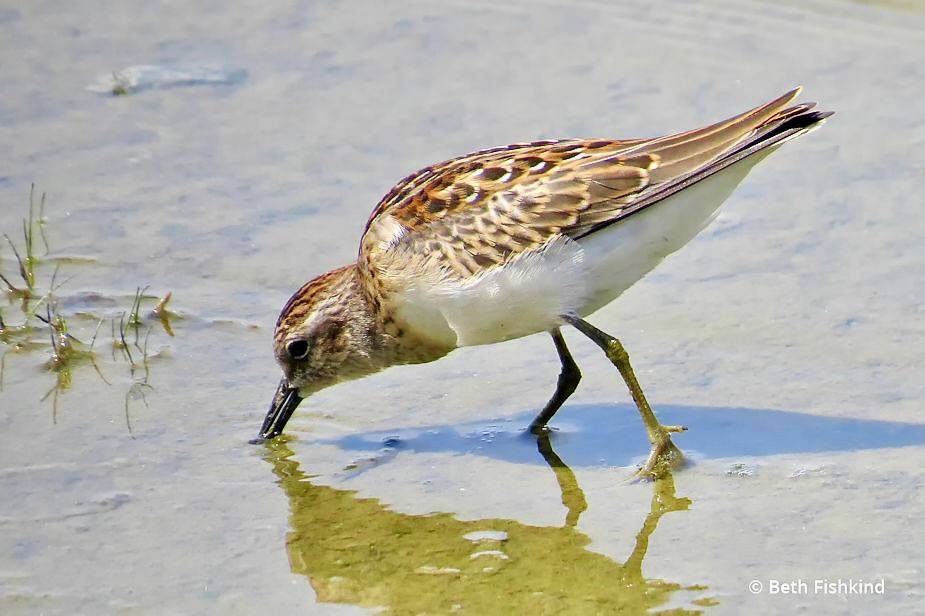
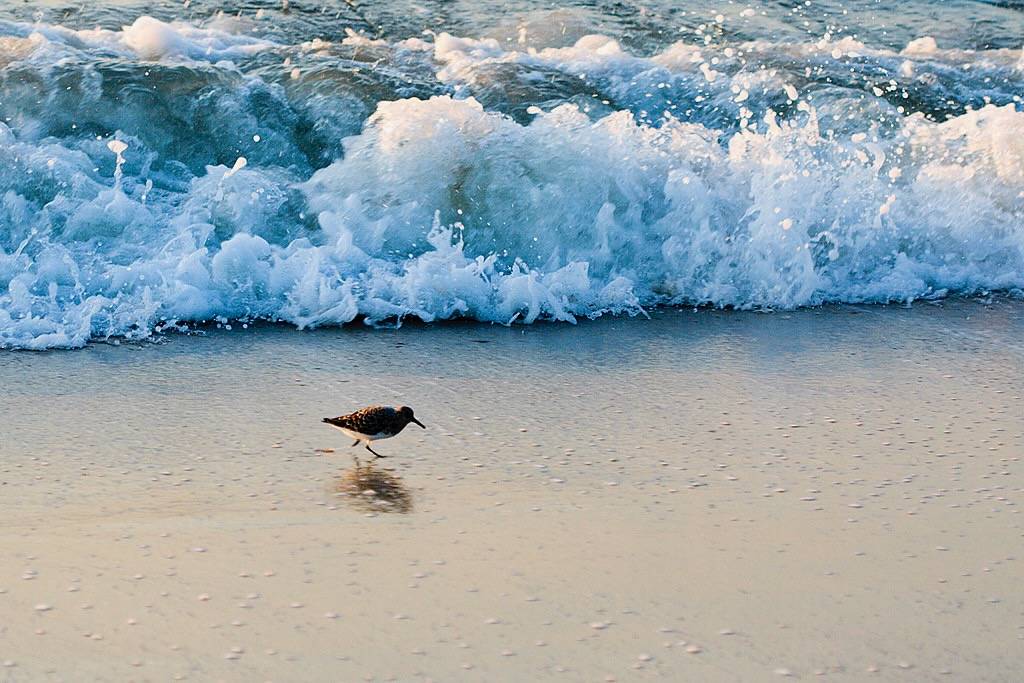
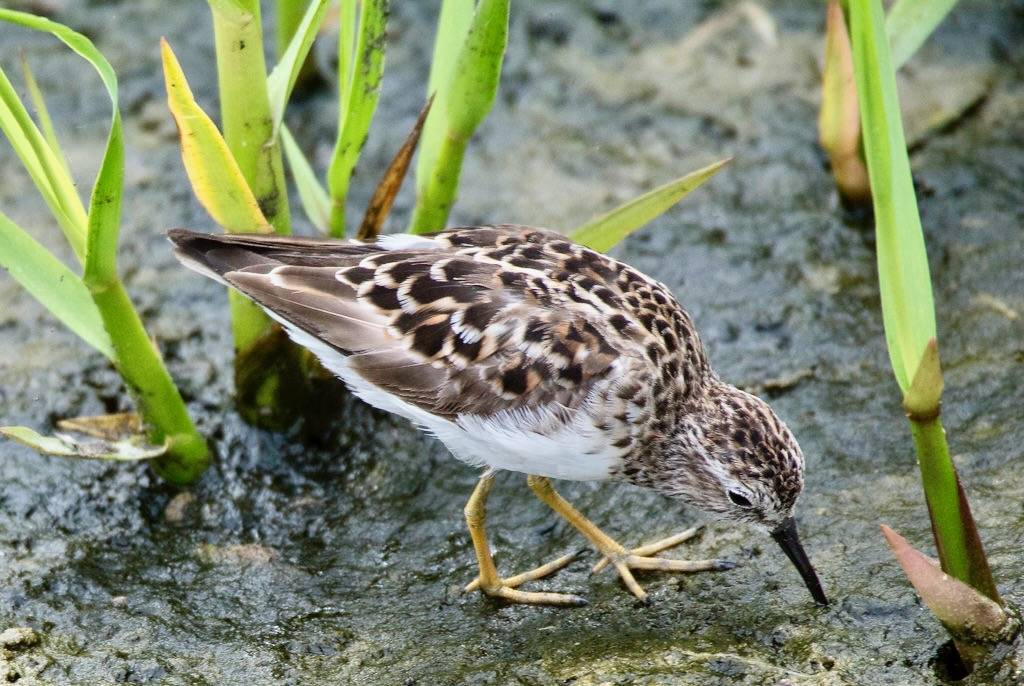
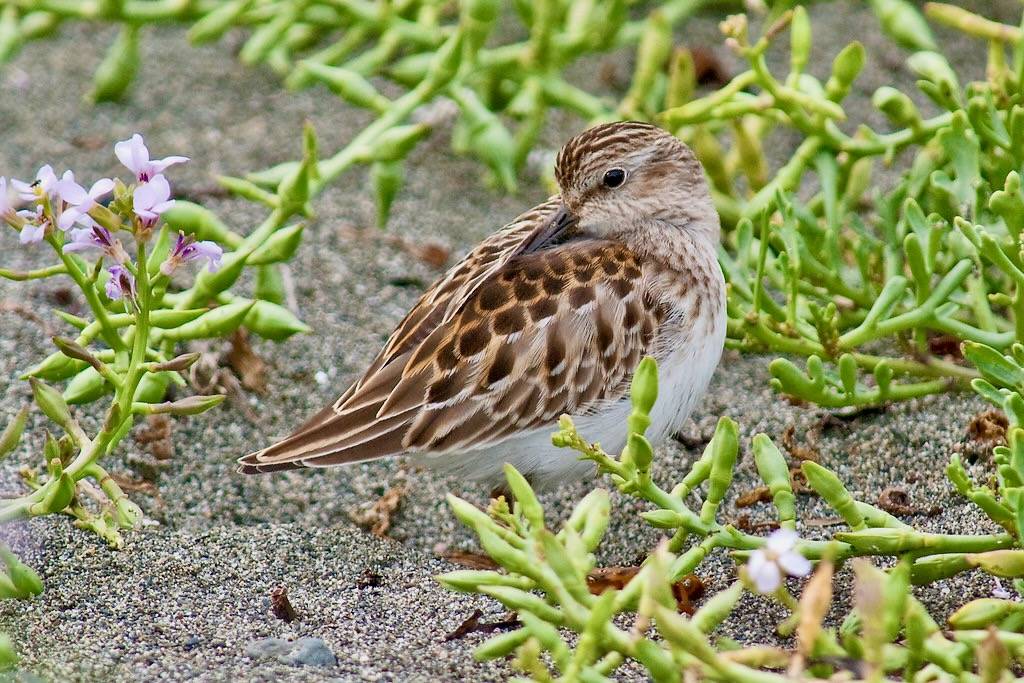
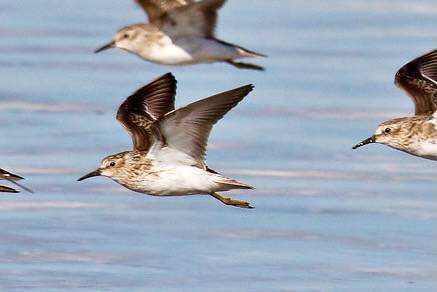
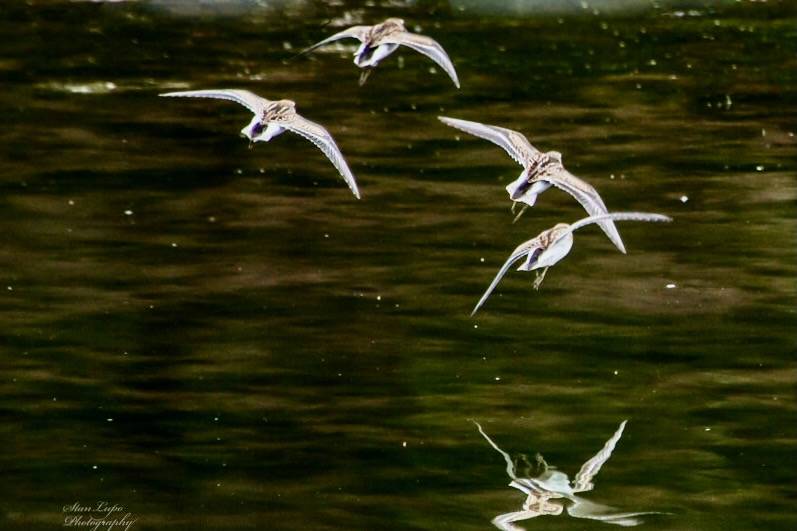
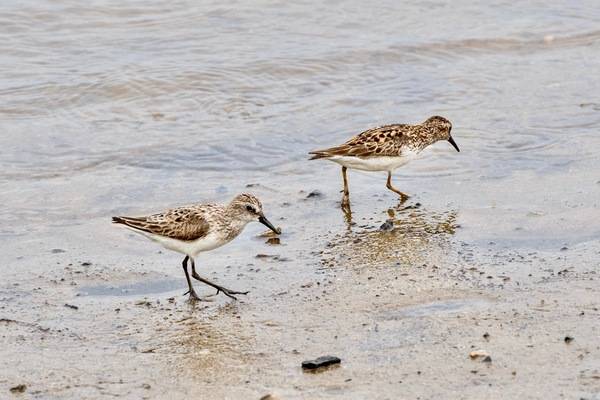
![Playero Semipalmeado [Semipalmated Sandpiper] (Calidris pusilla) + Playerito Menudo [Least Sandpiper] (Calidris minutilla) by barloventomagico is licensed under CC BY-NC-ND 2.0.](/_files/public/Bird Galleries/Least Sandpiper/11 Least Sandpiper and Semipalmated Sandpiper 15may10.jpeg?w=350?blur=10)
